Ready to take your digital agency to the next level?
Just like birds team up to cover more ground, strategic partnerships can help your agency expand its reach and capabilities.
By joining forces with the right allies, you can offer a wider range of services, tap into new markets, and deliver even more value to your clients.
This guide will walk you through the steps of identifying, evaluating, negotiating, and integrating partnerships that will elevate your agency’s offerings.
With the right partnerships, you’ll not only grow your business but also create a network of like-minded professionals who are all working together towards common goals.
Let’s get started!
Key Takeaways
- Thorough research and analysis are necessary to ensure alignment with agency goals and values.
- Look for companies that complement services rather than directly compete.
- Clearly define mutual benefits for both parties involved.
- Prioritize seamless assimilation of new services into agency’s offerings.
Identifying Potential Partners
You frequently come across potential partners in the digital industry through networking events and online platforms. When it comes to partner selection, due diligence is crucial. It’s essential to conduct thorough research and analysis to ensure that the potential partner aligns with your agency’s goals and values. Consider their expertise, reputation, and compatibility with your brand.
In the competitive landscape of the digital industry, market analysis plays a vital role in identifying potential partners. Look for companies that complement your services rather than directly competing with you. This can open up opportunities for collaboration and mutual growth. Assess the market positioning of potential partners to ensure that there’s a strategic fit that benefits both parties.
As you navigate the process of identifying potential partners, remember that it’s not just about finding any partner, but finding the right one. Seek out partners who share your vision and can add value to your agency. Engage in open communication and explore how both parties can leverage each other’s strengths to achieve common objectives.
Evaluating Partnership Opportunities
As you move forward in evaluating partnership opportunities, consider how potential collaborations align with your agency’s strategic goals and values. Evaluating criteria for potential partnerships is crucial to ensure that the partnership is mutually beneficial and aligned with your agency’s vision.
Start by identifying your agency’s specific needs and goals. What areas do you aim to strengthen through a partnership? Whether it’s expanding your service offerings, reaching new markets, or enhancing your technological capabilities, having a clear understanding of your objectives will help you evaluate potential partners more effectively.
Next, assess the compatibility of your agency and the potential partner. Look beyond just the surface level and delve into their values, work culture, and business practices. Are they aligned with yours? Do they share a similar commitment to quality, innovation, and customer satisfaction? Evaluate how well your strengths and weaknesses complement each other. A partnership should fill the gaps where you may be lacking and vice versa.
Consider the long-term implications of the partnership. Will it enable sustainable growth for both parties involved? Assess the potential for scalability and the likelihood of achieving common goals over time. Additionally, evaluate the financial aspects of the partnership, including investment requirements and potential returns.
Negotiating Partnership Terms
Now that you’ve identified potential partners, it’s time to negotiate the terms that will form the foundation of your strategic alliances.
Defining mutual benefits ensures that both parties have a clear understanding of what they stand to gain from the partnership.
Defining Mutual Benefits
When negotiating partnership terms, it’s essential to clearly define the mutual benefits for both parties involved. By creating value and fostering collaboration, you can ensure that the partnership is beneficial for everyone. Start by identifying what each party brings to the table and how those strengths complement each other. This will help to establish a foundation for a successful partnership. Consider how the partnership can help each party reach their goals and address any potential challenges. Be open to compromise and find ways to align your interests for a mutually beneficial outcome. Clearly outlining the benefits for both sides will set the stage for a strong and productive partnership.
Now, let’s delve into the next crucial step: establishing clear expectations.
Establishing Clear Expectations
To negotiate partnership terms effectively, ensure that clear expectations are established from the outset. Clear communication is key to avoid misunderstandings.
When negotiating partnership terms, be sure to:
- Clearly outline the roles and responsibilities of each party involved.
- This includes specifying deliverables, timelines, and any specific performance expectations.
- It’s important to have a mutual understanding of what success looks like for both parties.
By setting clear expectations, you create a solid foundation for the partnership. This not only helps in avoiding future conflicts but also ensures that both parties are aligned towards common goals.
Balancing Risks and Rewards
As an agency seeking to expand through strategic partnerships, you must carefully balance the risks and rewards when negotiating partnership terms. Managing risk and maximizing rewards are crucial elements in securing beneficial partnerships.
When discussing terms with potential partners, it’s vital to assess the potential risks involved, such as financial liabilities, resource allocation, and brand reputation. Simultaneously, emphasize the potential rewards, including access to new markets, enhanced capabilities, and shared expertise.
To strike a balance, consider implementing risk-mitigation strategies, such as clear communication, legal safeguards, and defined exit strategies, while also ensuring that the partnership offers substantial rewards that align with your agency’s growth objectives.
Onboarding New Service Providers
First, assess the specific needs and capabilities of your digital agency before onboarding new service providers. Understanding your agency’s gaps and strengths will help you identify the right partners to fill those gaps and enhance your offerings.
When onboarding new service providers, it’s important to follow a structured approach to ensure seamless integration and maximize the potential of the partnership. Here are some key steps to consider:
- Service Provider Selection
- Identify the specific services or expertise your agency lacks and requires from potential partners.
- Evaluate the reputation, experience, and quality of work of potential service providers to ensure they align with your agency’s standards and values.
- Onboarding Process
- Clearly communicate your agency’s goals, expectations, and processes to the new service providers to establish a shared understanding from the outset.
- Provide comprehensive training and resources to facilitate a smooth transition and integration of the new services into your agency’s offerings.
By focusing on partnership alignment and performance metrics, you can strengthen the foundation of your strategic alliances. As you onboard new service providers, keep an eye on the alignment of values, goals, and work ethics.
Additionally, establish clear performance metrics and communication channels to monitor the progress and impact of the new partnerships. This will ensure that both parties are working towards common objectives and that the partnerships are delivering the expected value to your agency and clients.
Integrating New Services
When integrating new services into your digital agency, prioritize a seamless assimilation to enhance your overall offerings. Service expansion is an exciting opportunity to provide additional value to your clients. Start by evaluating the needs and preferences of your current client base. Understanding their pain points and desired outcomes will guide your decision-making process. Look for services that complement your existing offerings, creating a more comprehensive solution for your clients. By doing so, you not only enhance your service portfolio but also strengthen client satisfaction.
Once you’ve identified the services to integrate, focus on creating a smooth transition. This could involve providing training for your team, updating your marketing materials, and ensuring that your internal processes are aligned with the new services. Communicate the expansion to your clients transparently, highlighting the benefits they can expect from the enhanced offerings. Emphasize how the new services align with their needs and how it will improve their overall experience with your agency.
Remember, the key to successful integration is to prioritize client satisfaction. Your clients should feel the positive impact of the service expansion, whether it’s through increased efficiency, improved results, or a more holistic approach to meeting their needs. By ensuring a seamless assimilation and focusing on client satisfaction, you’ll not only expand your digital agency’s services but also deepen your relationships with your clients.
As you integrate new services, it’s essential to consider how they can be leveraged in joint marketing strategies with strategic partners. This collaborative approach will allow you to maximize the impact of the expanded services and reach a broader audience.
Developing Joint Marketing Strategies
By developing joint marketing strategies with strategic partners, you can amplify the reach and impact of your expanded services. Collaborating on marketing efforts allows you to tap into each other’s networks, gaining access to new audiences and potential clients.
Here’s how you can make the most of your joint marketing strategies:
- Aligning Brand Messaging: Ensure that your brand messaging aligns seamlessly with that of your strategic partner. Consistent messaging across both entities will reinforce the value proposition and create a unified front, resonating with the target audience.
- Imagery: Picture your brand’s logo and messaging seamlessly integrated with your partner’s, creating a powerful and cohesive marketing message that speaks directly to your combined audience.
- Leveraging Cross-Promotional Opportunities: Collaborate on cross-promotional activities such as co-branded content, joint webinars, or shared social media campaigns. This will allow both parties to leverage each other’s strengths and resources, maximizing exposure and engagement.
- Imagery: Envision your brand’s content being shared across your partner’s platforms, reaching a wider audience and generating increased interest and leads.
When developing and executing joint marketing campaigns, it’s crucial to set clear objectives and key performance indicators (KPIs) to measure success. Regularly measure and analyze the campaign performance to identify areas for optimization.
Providing Ongoing Support and Communication
When it comes to providing ongoing support and communication, client relationship management is key.
By implementing proactive communication strategies, you can ensure that your clients feel supported and informed throughout the partnership.
This won’t only strengthen your agency’s reputation but also lead to long-term, successful partnerships.
Client Relationship Management
To effectively provide ongoing support and communication for your clients, prioritize regular check-ins and proactive problem-solving. This approach fosters client retention and satisfaction, essential for successful account management. It’s crucial to maintain open lines of communication and actively listen to your clients’ needs. Consider implementing the following strategies:
- Regular Check-Ins: Schedule periodic meetings to discuss progress, address concerns, and gather feedback.
- Proactive Problem-Solving: Anticipate potential issues and develop solutions before they escalate, demonstrating your commitment to your clients’ success.
By consistently engaging with your clients and being proactive in addressing their needs, you can strengthen your relationships and build trust. This proactive approach sets the stage for successful long-term partnerships and opens the door for further growth and collaboration.
Moving on to proactive communication strategies, let’s explore how to effectively engage and inform your clients.
Proactive Communication Strategies
Ensure regular check-ins and proactive problem-solving to maintain open lines of communication and actively address your clients’ needs. Proactive communication is key in nurturing strong client relationships.
Schedule regular touchpoints to provide updates, gather feedback, and address any concerns promptly.
Effective collaboration relies on clear and consistent communication. Be proactive in sharing relevant information, seeking input, and offering support. Emphasize the importance of two-way communication, where both parties feel heard and valued.
Encourage open dialogue and transparency to build trust and understanding. Actively listen to your clients’ needs and concerns, and demonstrate your commitment to their success through proactive communication.
Monitoring and Adjusting Partnerships
Effective monitoring and adjustment of partnerships is essential for sustaining growth and maximizing benefits for both parties. It’s important to regularly assess the performance of your partnerships and make adjustments as needed to ensure that they remain mutually beneficial.
Here are some practical tips to help you effectively monitor and adjust your partnerships:
- Regular Check-ins: Schedule regular check-in meetings with your partners to discuss the progress of your collaboration. This can help identify any issues early on and make necessary adjustments to keep the partnership on track.
- Imagery: Imagine sitting down with your partners over a cup of coffee, discussing the partnership’s performance, and brainstorming ideas for improvement.
- Data Analysis: Utilize data and analytics to evaluate the impact of the partnership on your business. Look for key performance indicators and trends that can guide your decision-making process when adjusting the partnership.
- Imagery: Picture yourself diving into the data, identifying patterns, and using these insights to fine-tune your partnership strategies.
By actively monitoring and adjusting your partnerships, you demonstrate your commitment to the success of the collaboration. It also fosters a sense of trust and transparency with your partners, reinforcing a strong, mutually beneficial relationship.
Frequently Asked Questions
How Can I Ensure That Potential Partners Align With My Agency’s Values and Mission?
When seeking potential partners, ensure they align with your agency’s values and mission.
Start by openly sharing your agency’s core values and mission statement.
As you engage with potential partners, ask about their values and mission.
Look for alignment through shared goals and a commitment to similar principles.
What Are Some Common Pitfalls to Watch Out for When Evaluating Partnership Opportunities?
Looking to evaluate partnership opportunities? Watch out for common pitfalls like misaligned values, lack of clear communication, and potential conflicts of interest.
How can you ensure partner alignment with your agency’s mission and values? By evaluating risks and being thorough in your partnership evaluation. Keep communication open, set clear expectations, and ensure that the partnership benefits both parties.
How Do I Navigate the Negotiation Process to Ensure a Fair and Mutually Beneficial Partnership?
When negotiating, prioritize clear communication and mutual understanding. Start by outlining your goals and expectations, then actively listen to the other party’s needs.
Use negotiation strategies like compromise and creative problem-solving to reach fair partnership agreements. Keep an open mind and be flexible, but also assertive about your agency’s needs.
What Are Some Best Practices for Effectively Onboarding New Service Providers Into My Agency’s Workflow?
When onboarding new service providers into your agency’s workflow, it’s vital to communicate clear expectations and provide thorough training.
Ensure that the onboarding process is smooth by addressing any integration challenges head-on and offering support every step of the way.
Embracing change can be like navigating uncharted waters, but with patience and perseverance, you’ll soon sail smoothly through the transition.
How Can I Gauge the Success of a Joint Marketing Strategy and Make Necessary Adjustments?
To measure success in a joint marketing strategy, track metrics like customer engagement, lead generation, and conversion rates. Analyze the data regularly to identify areas for improvement. Adjust strategies based on the insights gained, and be open to trying new approaches.
Communication with your partners is key, so collaborate on making necessary changes. Remember, it’s a journey, and making adjustments along the way is all part of the process. Keep learning and growing together.
Final Thoughts
By strategically partnering with other agencies, you can expand your digital services and reach new clients.
You may be concerned about the challenges of negotiating and integrating new partnerships, but remember that with careful planning and communication, you can overcome these obstacles.
Embrace the opportunities for growth and collaboration, and watch your agency thrive in the digital landscape.
Keep pushing forward and don’t be afraid to explore new possibilities.






